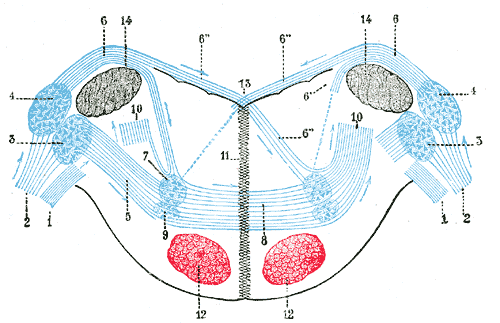A team of researchers from Montreal has found that stroke patients living with Locked-In Syndrome (LIS) who cannot move, swallow or even breathe on their own, can regain a remarkable level of independence with technological help.
The team’s findings, to be presented at the Canadian Stroke Congress, stem from a 20-year study that followed the rehabilitation of 25 LIS patients, people who are aware and awake but cannot move or communicate verbally due to complete paralysis of nearly all voluntary muscles.
“These patients can achieve a remarkable level of independence in communication and mobility with the use of rehabilitation and technological help,” says researcher Dr. Nicole Beaudoin, specialist in physical medicine and rehabilitation in the neurology program and chief of rehabilitation at the Institut de réadaptation Gingras-Lindsay de Montréal. “They have a strong will to live and we help improve the quality of their lives.”
LIS results from a lesion to the brainstem, which can occur when a stroke impacts this specific small area at the junction between the spinal cord and the left and right hemispheres of the brain. The lesion blocks the brain’s motor pathways, resulting in almost complete paralysis.
The majority of patients in this study received training to use some form of technology that could enhance their independence.
Forty per cent succeeded in using a cephalic control ─ a joystick activated by the movements of the head ─ to drive a wheelchair.
Twenty five per cent were able to use a head mouse emulator ─ a little reflector placed on the forehead that sends information to a small receptor in a computer ─ allowing them to use the computer.
Others, who had even more limited movement, require more sophisticated computerized interfaces to activate a scanning system, which permits combined computer-supported communication and safe wheelchair control.
“In spite of considerable motor disabilities, many patients achieved a high level of autonomy to communicate and to control a motorized wheelchair,” says Dr. Beaudoin. “Advances in technology can dramatically improve independence for LIS patients.”
Though these patients are virtually completely immobile, they are sometimes left with the ability to make a one- or two-degree movement of the head, a twitch of a finger or toe, or an eye movement. These minimal functions can open up their world in many ways.
Some patients in this study, for example, learned to operate a motorized wheelchair or control a mouse to access a computer with just the slightest head movement. Others could use eye tracking to access an interface with words or symbols, allowing them to be heard.
One patient has a switch under her first toe, and with that she can write, communicate, send emails, and play computer games, and her words are translated into sound.
Another patient had originally spent a year on his back, staring at the ceiling. At the time, no one knew he could communicate with his eyes. With the right technology, now he can let his caregivers know of his needs.
“We see that advances in technology can greatly improve independence and the lives of many people following a stroke, including those with LIS,” says Ian Joiner, director of stroke at the Heart and Stroke Foundation. “These results underscore how rehabilitation can have a huge positive impact, even when the outcomes appear very grave at first.”
“Locked-in syndrome, beautifully shown in the French film The Diving Bell and the Butterfly, occurs with major brainstem stroke,” says Dr. Michael Hill, Canadian Stroke Congress co-chair. “It leaves patients fully conscious, aware and mentally competent but completely paralyzed. These remarkable developments in assistive technology can allow victims of this uncommon stroke type, the full re-expression of their humanity.”
Until now, there has been little Canadian data on the functional outcome of people living with LIS.


